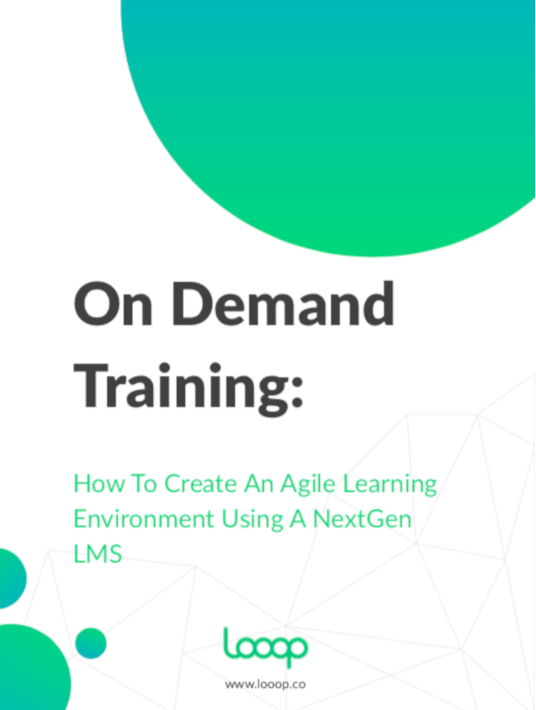On Demand Training: The Importance Of Tracking Learner Performance And How To Achieve It With NextGen LMS
The learning industry has changed rapidly with the increased use of technology, availability of web-searches and demand for immediate answers. With all of the hype around new methods and ideas, it’s easy to lose sight of the goal or helping employees perform in their roles.

It’s more important than ever to be able to understand the impacts on learner performance of new programs and initiatives, to avoid drowning them in a sea of endless buzzwords and well-meaning distractions.
On the upside, the benefits of tracking learner performance are huge. By measuring impact, engagement, and effectiveness, you can help your organization by improving Return On Investment (ROI), building better outcomes and increasing productivity across the business.
NextGen LMSs are designed to support today’s workforce and achieve better performance, but what should you actually be measuring? Take a look at the 3 points below to understand the importance of tracking leaner performance and how to achieve it with a NextGen LMS.
1. Engagement
Your training platform is pointless if nobody uses it. If it is filled with content that doesn’t provide value or relevance to your employees, then they won’t ever engage with it. Digital resources address what your employees are searching for online, but in a way that is relevant to your organization and ‘how things are done here’. They provide context-rich solutions that address the issues and questions your employees have. By focusing on the motivations of your staff and providing the solutions they need to do their jobs better and faster, the potential to enhance everyday performance in your organization is huge.
By making this useful information available on demand, you will find your employees are much more likely to engage with your training materials, as they are able to take control of their own learning. They can learn at a pace that suits them, easily connect with subject matter experts, access your learning materials any time and place, and easily put their learning into practice, resulting in higher productivity and job satisfaction.
What should you be looking at is if you are reaching your target group and are they engaging? Traditional L&D measures will just look at the number of engagements and completions across an organization. Whereas modern approaches see engagement as simply the first step towards supporting the modern worker. This requires an understanding of who specifically you are targeting and to what extent they are (and are not) engaging.
The data as to why your target is not engaging is more important than the numbers of who is. Iterations can then be made to make resources and experiences more appropriate to them and their needs.
2. Usefulness
To what extent was the resource or experience useful in the context of what your target is trying to do?
NextGen platforms should assist in the doing (and planning to do) rather than just the learning. If the resource or experience was not useful, then it is important to understand how it could be more useful.
Gone are the days of one-and-done, as far as a learning event is concerned. In today’s world iteration for repeat engagement will help to support and guide your targets, over and over again, with more and more usefulness each time.
3. Utilization
It’s one thing to be useful but another to be used. Was what was shared used, in the context of the target’s role? This will give an indication of the impact made by your intervention (resource or experience) and then help to apply a value.
If people are going to it, finding it useful and using it, then you are influencing the way that the work is done, by supporting and guiding workers in a way that enhances the outcome and builds the required capability.
When you focus on measuring and reporting on everyday performance rather than learning metrics, you will find the results of your on demand training are far more beneficial to the business because you’re addressing real common concerns and issues within the organization.
By providing solutions towards solving these performance problems, you’re training your staff to improve on the challenges they already face and work towards higher performance and capability.

